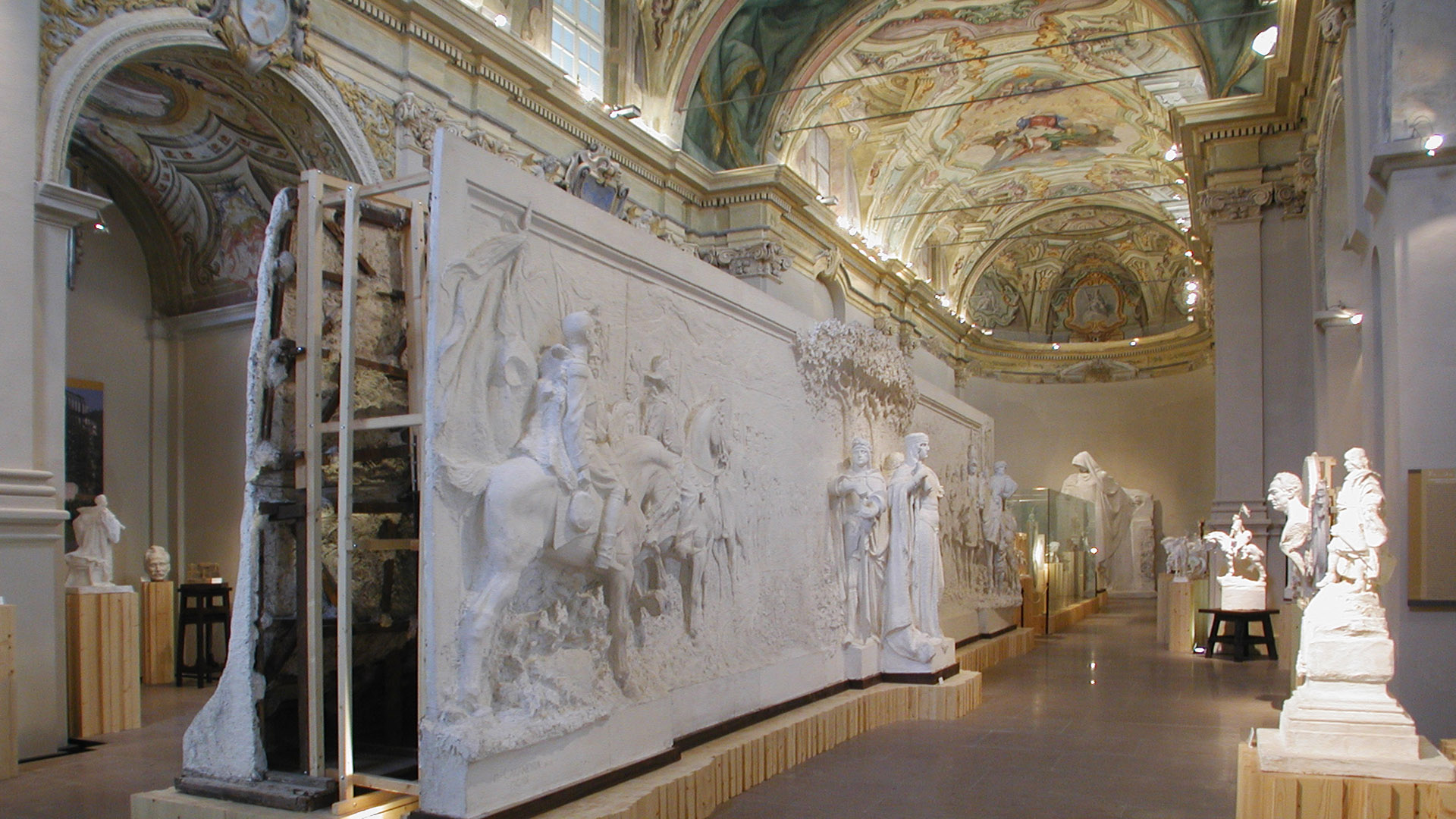The collections
Worthy of note on the ground floor are:
- Tombstone (of Lombard origin, belonging to the presbyter Gudiris) and archaeological finds;
- Relief plan of the town of Savigliano (1817);
- Antique refectory of the monks, now home to exhibitions;
- Davide Calandra Sculpture Museum: casts, sketches, plaster and terracotta models (cast of the frieze of the hall at Montecitorio in Rome)
The first floor features:
- Room housing the Pensa di Marsaglia - Frutteri di Costigliole donation (Flemish triptych of the "Stories of Job"), "Crucifixion" by Defendente Ferrari, sculptures and paintings from the 16th - 18th centuries);
- Picture Gallery: paintings by artists of the Savigliano school from the 17th century (G.A.Molineri, I. Claret, S. Carello);
- Theme rooms (graphics, textiles, devotional objects from the 17th -19th centuries);
- Attilio Bonino collection (paintings and sculptures from Piedmont between the nineteenth and twentieth centuries)
The arrangement
The new visiting path comprises a room on the ground floor which illustrates the story of the urban evolution of Savigliano, from early archaeological finds to present day transformations: the inspiration came from the highly original relief plan of the town, created in 1817 by Marco Nicolosino. A video produced for the occasion immediately documents the stages of the urban transformations. On the upper floor, the corridors of the west and north wings house the civil collection of works of art created between the 16th and 18th centuries; particular attention has been paid to illustrating the Savigliano school of painting, to which a video presenting the world of art conserved in the town or in the neighbouring area is dedicated. In the form of a ?talking portrait? an actor impersonates the great painter Giovanni Antonio Molineri. The theme rooms have enabled the inclusion in the exhibition of objects of quality and interest, gifts or acquisitions of different kinds: the character of ?territorial museum which has often been undertaken by the Savigliano structure is clearly documented. A special and exceptionally spacious area has been destined to the arrangement of the Pensa di Marsaglia - Frutteri di Costigliole donation, which comprises the Museum’s oldest and most precious works of art; works which the wealthy merchant-bankers, the Pensa family, acquired from Flanders (triptych of Job) or commissioned from the best artists operating in Piedmont, Liguria, etc. This section also houses a "talking portrait" which comes to life and tells the visitor why the works of art of the Pensa family are in the Museum. A whole corridor is destined to the donation of paintings and sculptures by Attilio Bonino, arranged to resemble the home of a private collector, made up of small areas where the works are hung close together and continuously. A future section of works will be arranged in the last wing of the 1st floor, destined for the works of the civic collection of the twentieth century and a series of theme rooms dedicated to the possessions of illustrious natives of Savigliano.

